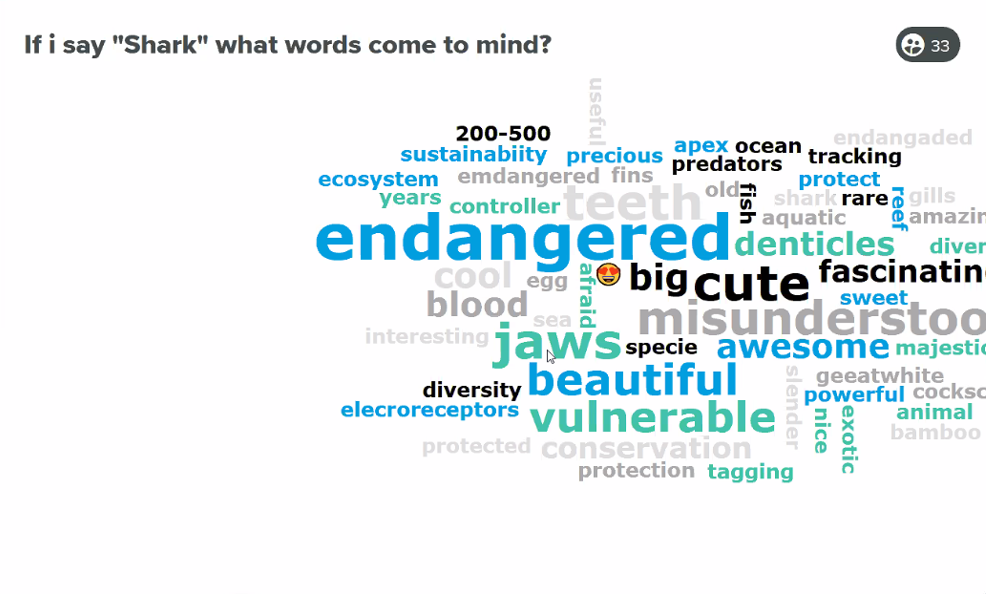One of the easiest ways to evaluate a learning intervention is the use of pre and post-training testing.
In essence, this is done by administering a test at the beginning of the instruction to determine the preexisting knowledge or preconceived ideas of the learner.
Then at the end of the session, you administer the same test which should demonstrate some changes which could indicate learning has occurred.

One of the easiest ways to evaluate a learning intervention is the use of pre and post-training testing.
In essence, this is done by administering a test at the beginning of the instruction to determine the preexisting knowledge or preconceived ideas of the learner.
Then at the end of the session, you administer the same test which should demonstrate some changes which could indicate learning has occurred.
Here’s an example from a webinar I attended recently.
The speaker, shark expert Dr Neil Hutchinson was giving a talk about sharks in Singapore. Right at the start of the session, he played a word association game with the attendees.
He asked: If I say “Shark” what words come to mind?
This was the word cloud of the responses he received. Some words that stood out include words like “jaws”, “blood”, “dangerous”, “scary”, “big”, “teeth” and “fish”. If I were to guess, all stereotypes about sharks based on a certain movie from the 70s about some guys needing a bigger boat.

After an interesting 60 minutes of sharing about sharks in Singapore, where Dr Hutchinson also shared about his own research on bamboo sharks, he asked the same question again.
If I say “Shark” what words come to mind?”
We now see a totally different word cloud with words like “endangered”, “beautiful”, “vulnerable”, “misunderstood” and “fascinating”. The word “jaws” is still there though, but I guess 40 years in pop culture has had an impact.

With pre and post tests like this, internal validity or the confidence that we have in the cause and effect relationship of the learning intervention is more easily discernible. But with a small sample group of the 100 attendees and no control group, external validity or the ability to generalize these results to the wider population might come into question.
So this talk might not be the silver bullet to turn people into shark conservationists.
But hey! Overcoming the stereotype of sharks being big, dangerous and scary fish with teeth in a 100 people is still a step forward!
